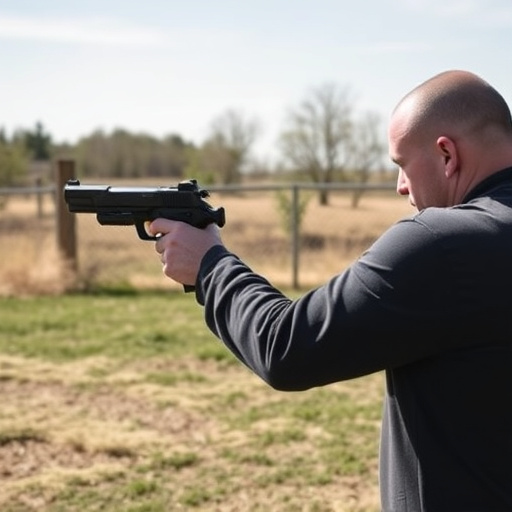This text compares two main types of stun weapons—projectile (like tasers, pepper spray) and contact (stun batons)—to help users choose the most powerful legal option. Projectiles offer remote, safe disruption but less versatility, while contacts are more effective in close quarters. Legalities vary greatly: contact weapons are generally more accessible due to lower risk, while projectile devices face stricter regulations and often require specialized training and authorization. Among the most powerful legal stun weapons, tasers outshine for instant incapacitation, while projectiles like stun balls excel in indirect scenarios with longer ranges. Choosing the best involves balancing regulation compliance, deployment ease, and robust design features like power output, size, weight, and battery life. Always check local laws to avoid issues.
In a world where personal safety is paramount, understanding the distinction between projectile and contact stun weapons is crucial. This article explores these two categories of self-defense tools, delving into their definitions, legalities, power, and effectiveness. We uncover the nuances that set them apart, with a focus on identifying the most powerful legal stun weapons available for personal protection. By considering factors like energy output and application, readers will gain valuable insights to make informed decisions in choosing the best option for their needs.
- Understanding Projectile and Contact Stun Weapons: Definitions and Differences
- Legal Considerations: Which Type is Permitted and Under What Conditions?
- Power and Effectiveness: A Comparative Analysis
- Choosing the Most Powerful Legal Stun Weapon: Factors to Consider
Understanding Projectile and Contact Stun Weapons: Definitions and Differences
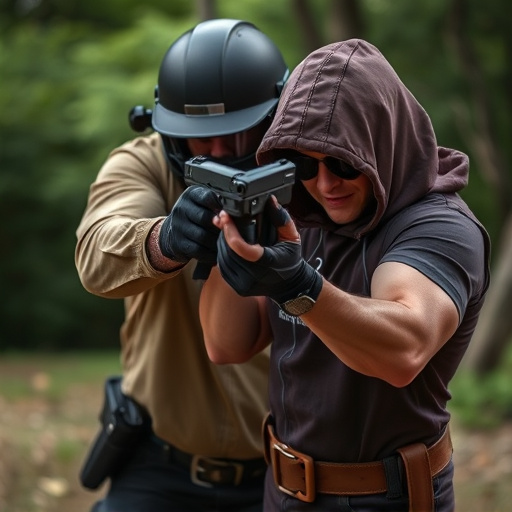
Stun weapons are designed to temporarily incapacitate individuals, and they fall into two primary categories: projectile and contact. Understanding these distinctions is crucial when considering the most powerful legal stun weapons available. Projectile stun weapons, as their name suggests, launch a specialized projectile towards the target. These can include items like tasers (conducted electrical weapons) that use electric current to disrupt muscle control, or pepper spray canisters that utilize chemical irritants. The advantage lies in their ability to deploy from a distance, offering a level of safety for both the user and bystanders.
In contrast, contact stun weapons require direct physical contact with the target. This category encompasses devices like stun batons, where pressure is applied to sensitive areas of the body, causing intense pain and temporary paralysis. While less versatile than projectiles, contact weapons are often considered more effective in close-quarters situations, providing a swift and powerful response when distance is not an option. When seeking the most powerful legal stun weapon, understanding these differences can help individuals make informed decisions based on their specific needs and legal considerations.
Legal Considerations: Which Type is Permitted and Under What Conditions?
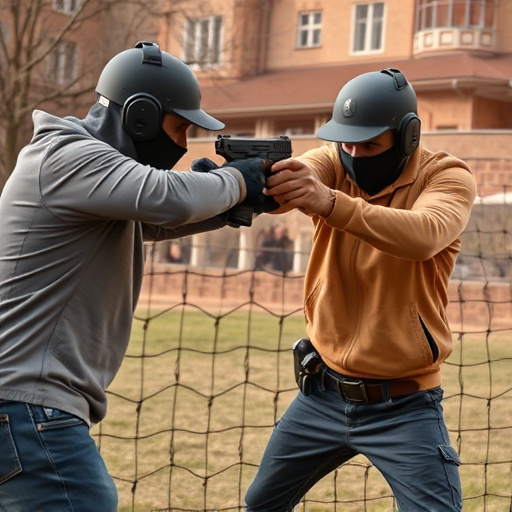
When it comes to legal considerations regarding stun weapons, the distinction between projectile and contact devices plays a significant role in their permissibility and usage conditions. Each type navigates a unique regulatory landscape, with laws varying across jurisdictions worldwide. Generally, contact stun guns are more widely accepted and legally accessible, as they operate within close range, reducing concerns about accidental discharge or misuse outside authorized boundaries. These weapons are often considered less harmful, making them permissible in many places without stringent licensing requirements.
In contrast, projectile stun devices, such as stun bullets or dart-firing stun guns, face stricter regulations due to their ability to cause harm at a distance. Legal frameworks typically require a higher level of authorization and training for ownership and use. The potential for misuse and the risk of causing injury or death in unintended targets make these most powerful legal stun weapons subject to more intense scrutiny. Authorities often limit access to such devices, reserving them for law enforcement agencies and specific security personnel under strict oversight.
Power and Effectiveness: A Comparative Analysis
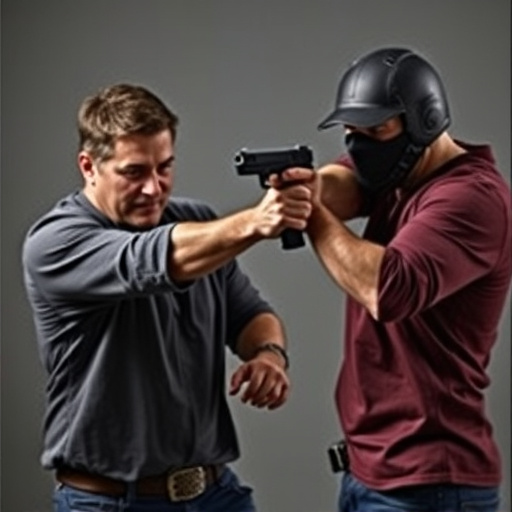
When comparing projectile and contact stun weapons, power and effectiveness are key considerations. Among the most powerful legal stun weapons available today, contact stun guns like Tasers stand out due to their ability to deliver a strong electric shock that can incapacitate a target instantly. This type of weapon ensures a direct and precise hit, making it highly effective in self-defense scenarios and law enforcement operations.
On the other hand, projectile stun weapons, such as stun balls or stun arrows, offer a more indirect approach. While they may not deliver the same level of force as contact weapons, they can be advantageous in certain situations where direct contact is not feasible or desirable. Projectile stun devices have a longer range and can be used to disable targets from a distance, making them popular choices for crowd control and security applications. However, their effectiveness relies on accurate aiming and the right environmental conditions to ensure maximum impact.
Choosing the Most Powerful Legal Stun Weapon: Factors to Consider
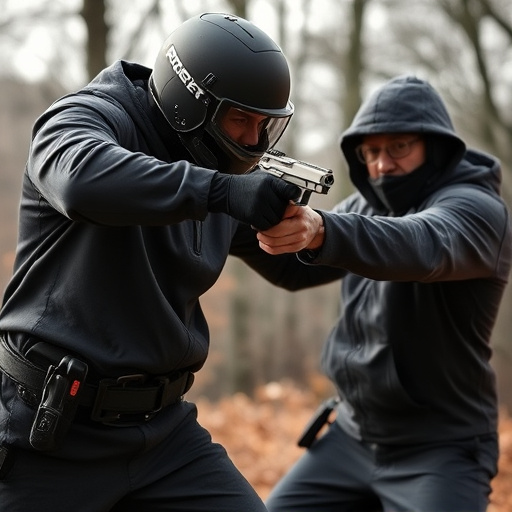
When it comes to choosing the most powerful legal stun weapon, several factors come into play. Firstly, understanding your specific needs and the legal framework in your region is crucial. Different areas have varying regulations regarding stun weapons, including power output limits and prohibited features. Therefore, ensuring compliance with local laws is essential to avoid legal repercussions.
The effectiveness of a stun weapon lies not only in its power but also in the design that facilitates easy deployment in high-stress situations. Consider the weight, size, and ease of use. The most powerful legal stun weapons often strike an optimal balance between delivering a strong shock for incapacitation and being portable enough to be readily accessible when needed. Additionally, features like durable construction, long battery life, and reliable activation mechanisms can significantly enhance the weapon’s overall performance and reliability.
